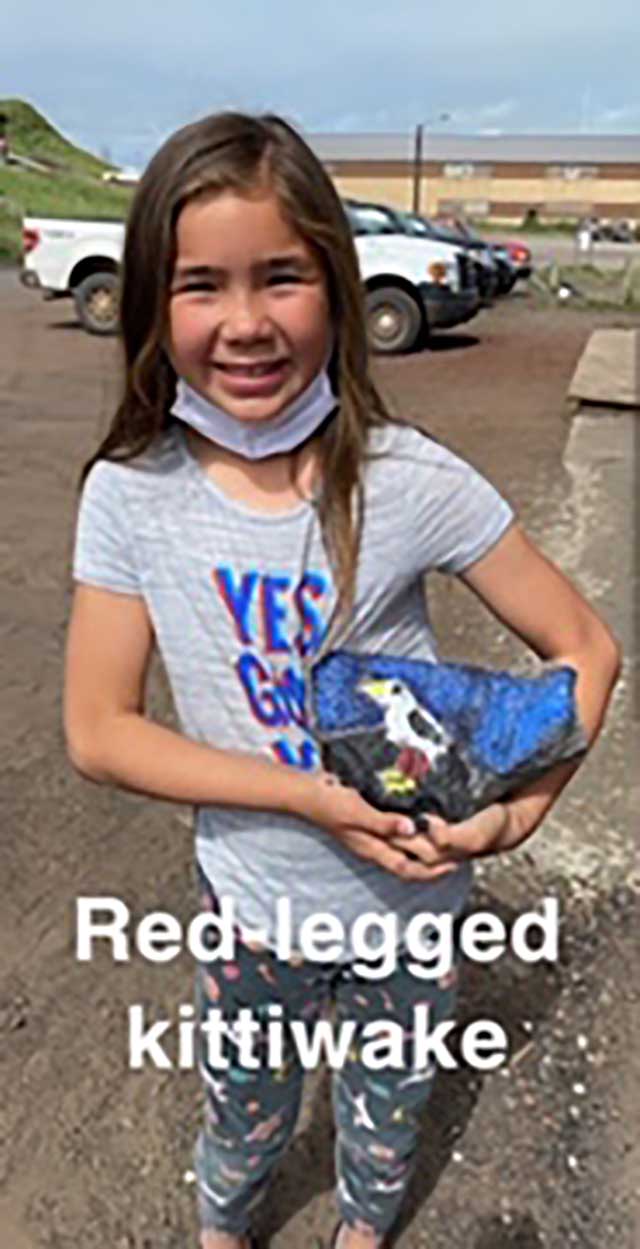Tuesday July 14
Today’s activities included the Voyage of the Tiglax maze, the Ocean Habitat booklet, and seabird rock painting. Our campus room was packed. We all made sure to social distance—some tables had more than one student if the students live together, otherwise everyone stayed in their own space. We also wore masks anytime we were inside and sanitized our hands anytime we entered campus. We had so many participants that every table was full.
We started off talking about the R/V Tiglax. Some of the students remembered seeing the boat here in St. Paul before. I forgot to ask them if any of them rode the boat out to Otter Island a few years ago! I’ll have to ask them tomorrow. We talked a little bit about what a Research Vessel does and why scientists would need to stay on a boat to learn about the ocean and seabird habitats.
Next we talked about the zones of the ocean. Tonia and Ashley created an example booklet so students had a model for their finished work. We read through the information together and assembled the book together, stopping to go over each of the zones: The sunlit zone, the twilight zone, the zone of darkness, and the deep sea floor. Some of the facts the students remembered later in the afternoon include: jellyfish and turtles live in the sunlit zone, some organisms hide in the twilight zone to avoid predators during the day and then come up to feed at night, and the temperature stays the same in the zone of darkness because no sunlight reaches that deep. One question that came up is how can flounder and halibut live on the bottom of the ocean but still have sunlight—a great question. We talked about how deep the deep sea floor is and why it’s different from the bottom of the ocean that we can see here on the island. We also talked about how we learn about new species on the ocean floor—student suggestions included divers and submarines.
Beginning when we were locked down in March, and continuing through the summer, the St. Paul Island community has been painting and hiding rocks as part of a FaceBook Group, St. Paul Island Rocks, started by April Kushin and Destiny Bristol Kushin. Our scientists incorporated some of the community enthusiasm into the Seabird Camp activities. One kids finished their ocean habitat booklets, the did a mini-interview with our AV team here at the campus, and then they went to find a rock. They waited anxiously for their turn to get their paint and paintbrushes. They picked a bird from a list of seabirds and sea ducks—almost everyone picked a horned puffin or a red-legged kittiwake. One of the campus interns found an enormous rock and painted “Seabird Camp 2020” on it and had all the kids sign their names. The best part about the big rock, in my opinion, is that the 0s in “2020” are painted to look like murre eggs! Kids left their rocks to dry overnight. They’ll pick them up tomorrow to hide around town.
Many kids came to campus today to participate, and some students picked up the activities to take and do at home. We’re also offering to drop off activities at home if someone doesn’t want to come out in public. Even though the procedures for camp are so different due to the pandemic and our safety precautions, the enthusiasm for camp activities and learning about seabirds is persisting!





